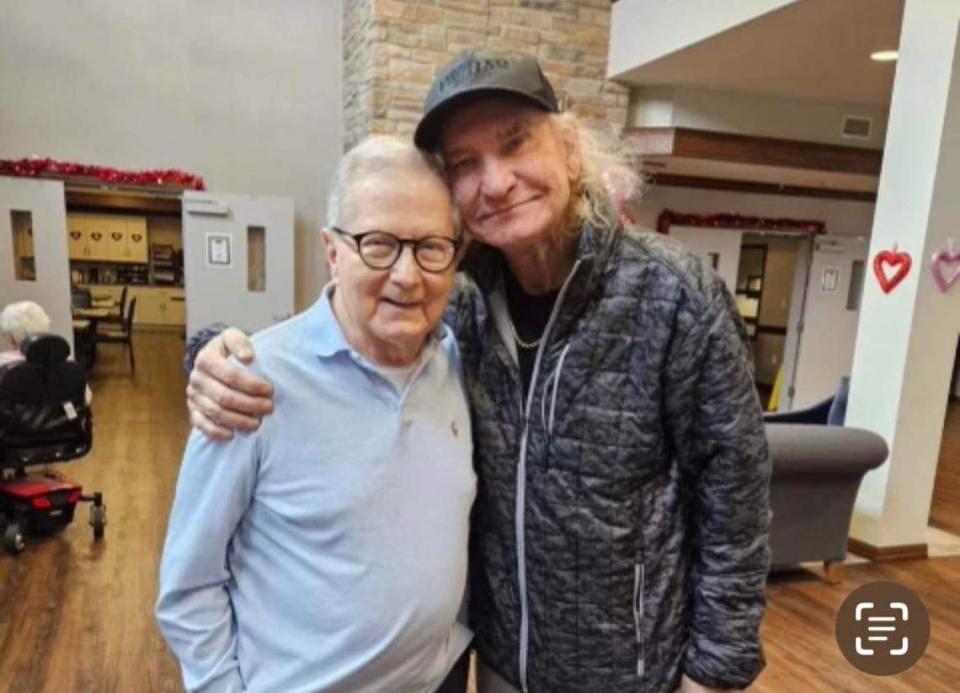From the BND Archives: Rock Hall hails wizardry Belleville’s Bob Heil created for the stars
- Oops!Something went wrong.Please try again later.
This article was originally published in the Belleville News-Democrat on May 9, 2006. Heil died on Wednesday, Feb. 28, at the age of 83.
The keen ear and technical know-how that put Bob Heil’s name in the Rolodexes of rockers Pete Townshend, Joe Walsh and Peter Frampton have landed his work in the Rock and Roll Hall of Fame and Museum.
A display of mixing boards, special effects machinery and speakers made by the metro-east resident and used by the biggest rock acts of the 1970s will be put on permanent display in the Cleveland museum June 8.
”This is something I have been putting together for about a year and half,” Heil said of the display. “There’s a lot of history in this equipment. I told the curator from the Hall of Fame that I would clean everything up really good for him and he freaked out. He told me not to clean or fix anything.”
Heil is a pioneering figure in the industry because he not only because he built the high-powered sound systems that made 1970s concerts the spectacle they were, according to Rock and Roll Hall of Fame curatorial director Howard Kramer. But also because he pioneered methods to make that A-bomb loud sound well articulated instead of just a wall of unintelligible noise.
”The concert business became what it is today because he made the experience so much better for the customers,” Kramer said of Heil. “No one made the leaps in live sound that he did.”
Heil, can pinpoint the date he made it in rock and roll. It was a fateful night in 1970 when he found himself on the opposite end of a phone line with Grateful Dead singer Jerry Garcia.
The psychedelic rock band arrived in St. Louis without its sound equipment and was desperately looking for something to borrow for a show at the Fox Theatre. In stepped Heil, who supplied a public address system complete with speakers, mixing board and microphones from his store, the Ye Olde Music Shoppe in Marissa.
”It was so much better than what they had, it blew them away,” Heil said. “They took my stuff on tour with them when they left for their next show.”
After that, luminaries of 70s rock and roll sought out Heil, who eventually relocated to Fairview Heights and changed the name of his business to Heil Sound.
The Who had him build a custom quadraphonic mixing board for the band’s 1974 Quadrophenia tour. The board, called MAVIS for Music and Voice Instrument System, along with a rear channel speaker from the tour, are the centerpieces of the Heil exhibit, according to Kramer.
Also included in the display are: A mixing board used to produce the sound for the legendary Mississippi River Festival and a fiberglass Talk Box, serial number 1, signed by Joe Walsh and Peter Frampton.
The Talk Box, which was invented by Heil, allows a guitarist to manipulate the sound of his instrument with his mouth.
”Joe wanted it for his song `Rocky Mountain Way,’ so I built it for him,” Heil said. “He made a sort of guttural sound with it. But Peter Frampton could actually talk through it.”
A microphone in the display used by The Who singer Roger Daltry is still wrapped in the 32-year-old red gaffer’s tape that Heil put on it to keep the mic from getting lost in the crowd.
”He would swing those things by the cord and the microphones would come loose and go flying,” Heil said of Daltry’s trademark stage move. “While everyone else was thinking `man, that looks cool’ I was thinking `Hey, that’s my microphone!’”
In case anyone questions the authenticity of the well-worn piece, Heil has hung from the microphone stand a photo taken during the tour of Daltry belting lyrics into the red-wrapped mic.
Most of the equipment that is going into the Hall of Fame was scattered around his garage in boxes, Heil said. But The Who’s mixing board was sold around 1980 when he grew disenchanted with the punk rock scene that took over rock music and got out of the business of engineering concert sound. A guy from Florida called him one day and offered to sell back the equipment, which was being used to prop up a broken bed frame.
While his equipment will be on display at the Hall of Fame, Heil was quick to point out that he isn’t being inducted into the Hall of Fame. At this point, there is no category for sound engineers.
”But that’s OK,” Heil said. “That’s not why I got into this. We were just having a great time. I never expected all the attention I’ve had.”


